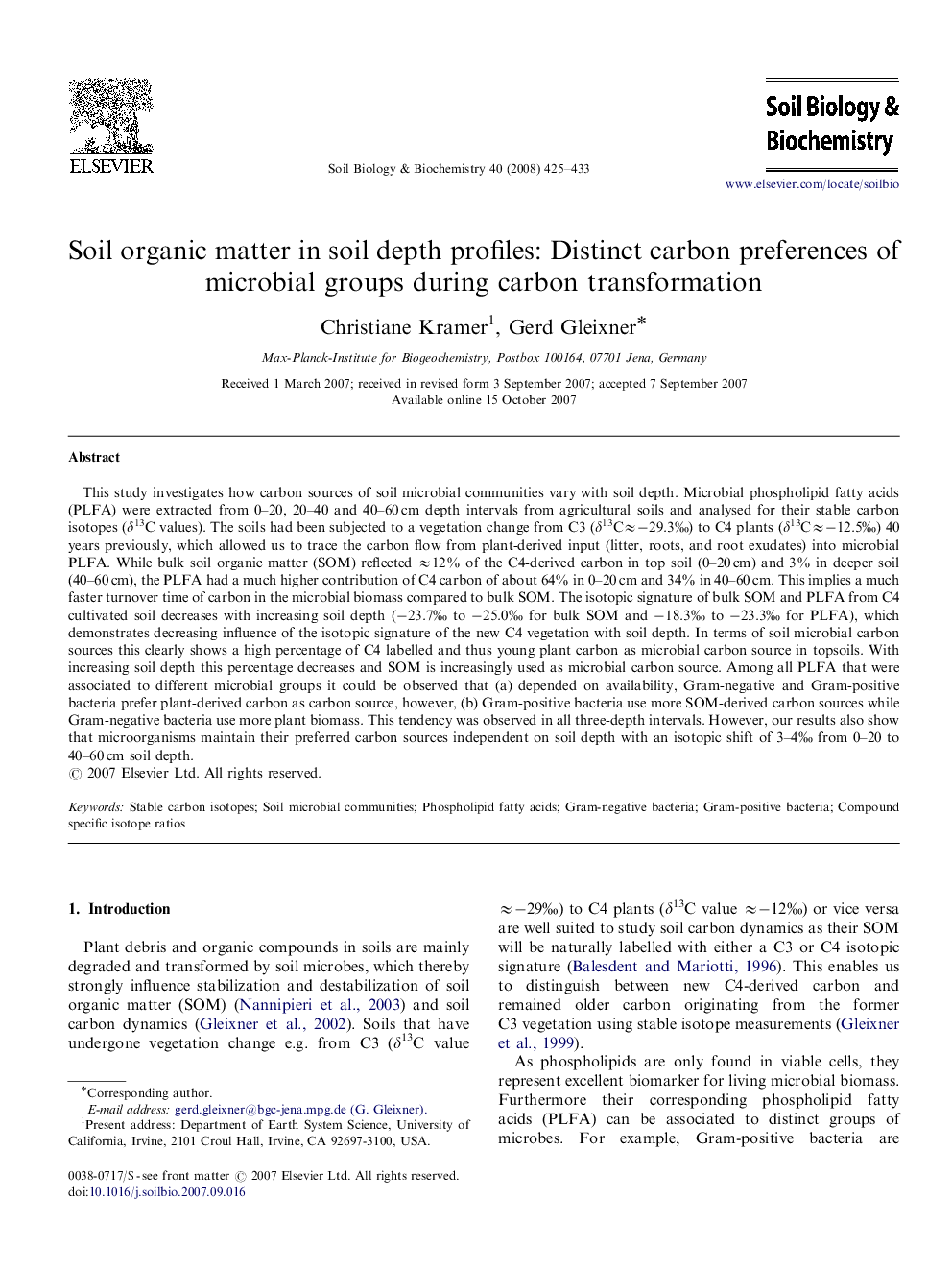| کد مقاله | کد نشریه | سال انتشار | مقاله انگلیسی | نسخه تمام متن |
|---|---|---|---|---|
| 2025336 | 1069992 | 2008 | 9 صفحه PDF | دانلود رایگان |

This study investigates how carbon sources of soil microbial communities vary with soil depth. Microbial phospholipid fatty acids (PLFA) were extracted from 0–20, 20–40 and 40–60 cm depth intervals from agricultural soils and analysed for their stable carbon isotopes (δ13C values). The soils had been subjected to a vegetation change from C3 (δ13C≈−29.3‰) to C4 plants (δ13C≈−12.5‰) 40 years previously, which allowed us to trace the carbon flow from plant-derived input (litter, roots, and root exudates) into microbial PLFA. While bulk soil organic matter (SOM) reflected ≈12% of the C4-derived carbon in top soil (0–20 cm) and 3% in deeper soil (40–60 cm), the PLFA had a much higher contribution of C4 carbon of about 64% in 0–20 cm and 34% in 40–60 cm. This implies a much faster turnover time of carbon in the microbial biomass compared to bulk SOM. The isotopic signature of bulk SOM and PLFA from C4 cultivated soil decreases with increasing soil depth (−23.7‰ to −25.0‰ for bulk SOM and −18.3‰ to −23.3‰ for PLFA), which demonstrates decreasing influence of the isotopic signature of the new C4 vegetation with soil depth. In terms of soil microbial carbon sources this clearly shows a high percentage of C4 labelled and thus young plant carbon as microbial carbon source in topsoils. With increasing soil depth this percentage decreases and SOM is increasingly used as microbial carbon source. Among all PLFA that were associated to different microbial groups it could be observed that (a) depended on availability, Gram-negative and Gram-positive bacteria prefer plant-derived carbon as carbon source, however, (b) Gram-positive bacteria use more SOM-derived carbon sources while Gram-negative bacteria use more plant biomass. This tendency was observed in all three-depth intervals. However, our results also show that microorganisms maintain their preferred carbon sources independent on soil depth with an isotopic shift of 3–4‰ from 0–20 to 40–60 cm soil depth.
Journal: Soil Biology and Biochemistry - Volume 40, Issue 2, February 2008, Pages 425–433